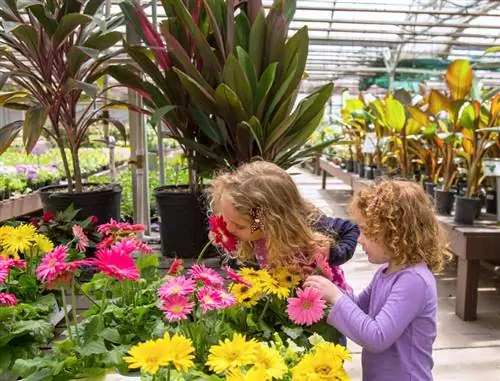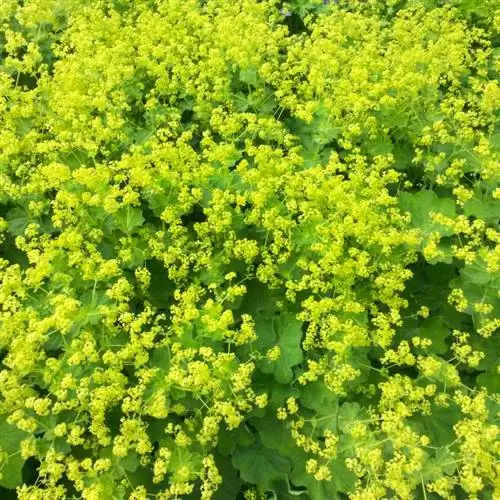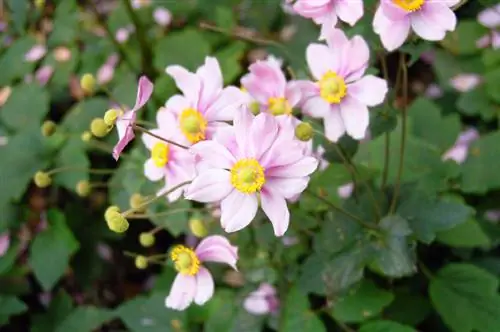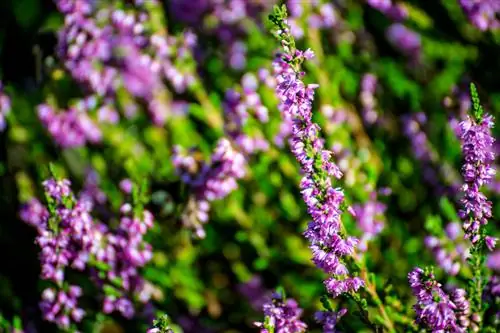- Author admin [email protected].
- Public 2023-12-16 16:46.
- Last modified 2025-01-23 11:20.
Gerbera is one of the demanding plants in the flower window. It is a little easier to care for the tropical plant in the garden. You have to keep this in mind if you want the gerbera to develop its full blooms and bloom for several years.

How do you care for gerberas properly?
Proper care for gerberas includes regular watering without waterlogging, weekly fertilization in the pot (monthly outdoors), repotting every two to three years and removing wilted flowers and leaves. Make sure there is enough light and protect the plant from the cold.
What should you consider when watering gerberas?
Gerbera likes it moist. The earth must never dry out completely. However, it cannot tolerate moisture that accumulates on the roots. Therefore, always water the plants from below and throw away excess water. In summer you need to give fresh water several times a day.
Gerberas in the garden also need plenty of moisture. Therefore, water regularly, but make sure that there is no waterlogging.
What fertilization does the plant need?
During the flowering period, the gerbera has an increased nutrient requirement. If you keep the plant in a pot on the balcony or terrace, you should add some fertilizer (€24.00 on Amazon) to the water every week. But use less than the manufacturer recommends, as excessive fertilization damages the roots.
In the open field, monthly fertilization is sufficient if the soil has been improved with mature compost before planting the gerbera.
When does Gerbera need to be repotted or transplanted?
Gerbera roots do not grow very quickly. It is therefore sufficient if you repot the plant every two to three years. It is even better if you simply divide roots that are too large. This will give you new plants.
Since almost all Gerbera varieties are not hardy, they have to be dug up in autumn and put in a pot.
Does Gerbera need pruning?
Gerbera is not cut back. Only cut off spent inflorescences and dried leaves as soon as possible. This extends the flowering period and keeps the plant compact.
What diseases and pests can occur on the gerbera?
The gerbera is a very robust plant that rarely becomes diseased or attacked by pests. These include:
- Gerbera rot
- Gray horse
- Whiteflies
- Aphids
Gerbera rot is noticeable through discoloration of the leaves and subsequent rot of the plant. Incorrect husbandry conditions such as temperature or too much fertilizer are to blame. Rescue is not possible. Discard the plant.
Gray mold appears as a gray coating on the leaves. It occurs when the plants get too little air, are too wet or too cool. Cut off affected leaves and care for the plant in a more favorable location.
Is Gerbera hardy?
With the exception of the “Garvinea” variety, Gerbera is not hardy and must be overwintered at temperatures of around 12 degrees. The hardy Garvinea also needs frost protection outdoors.
Tips & Tricks
Did you know that gerberas are real little pollutant filters? They develop bacteria on their roots that filter pollutants from the air. In winter, the houseplant not only provides colorful accents. It also improves the indoor climate.






